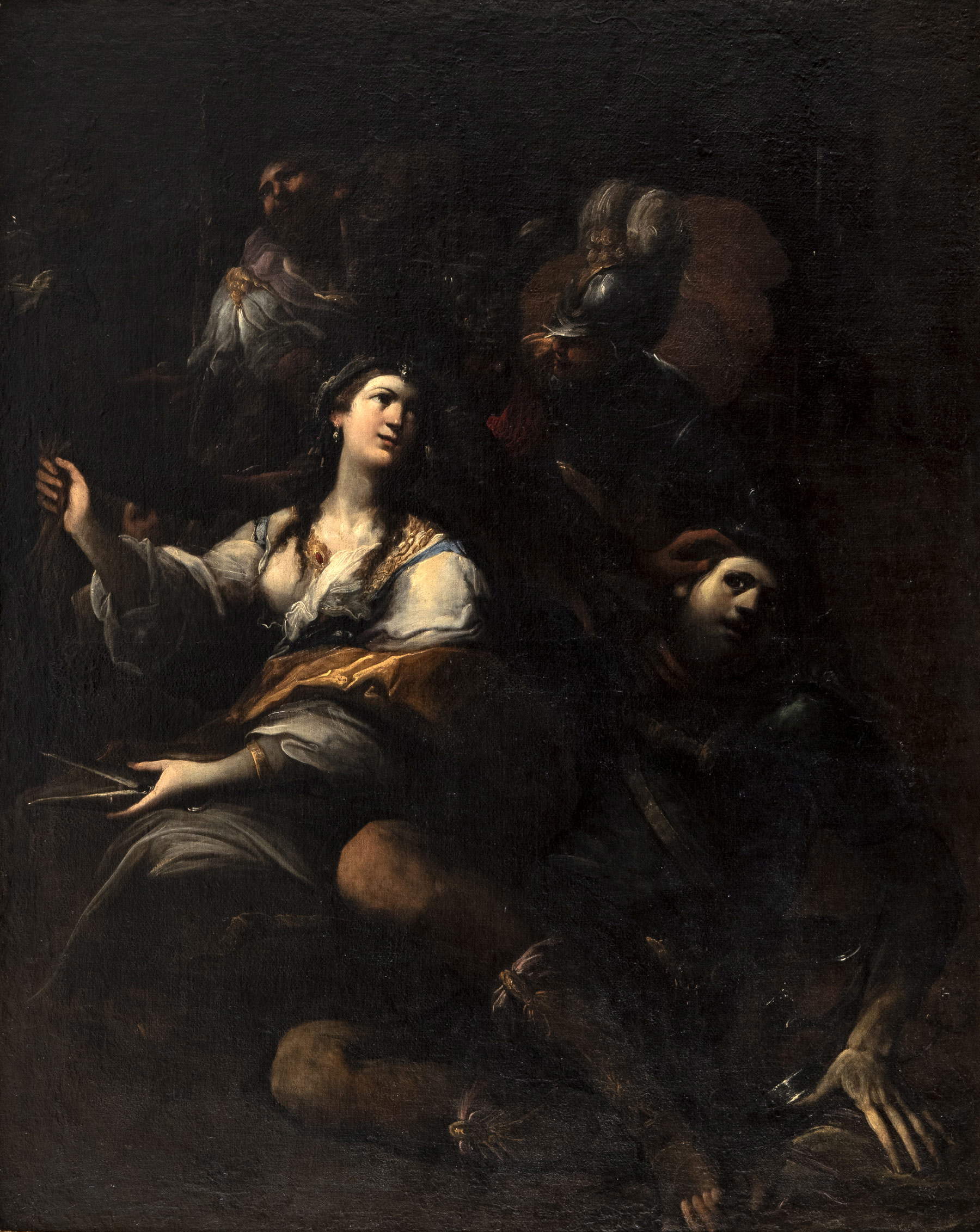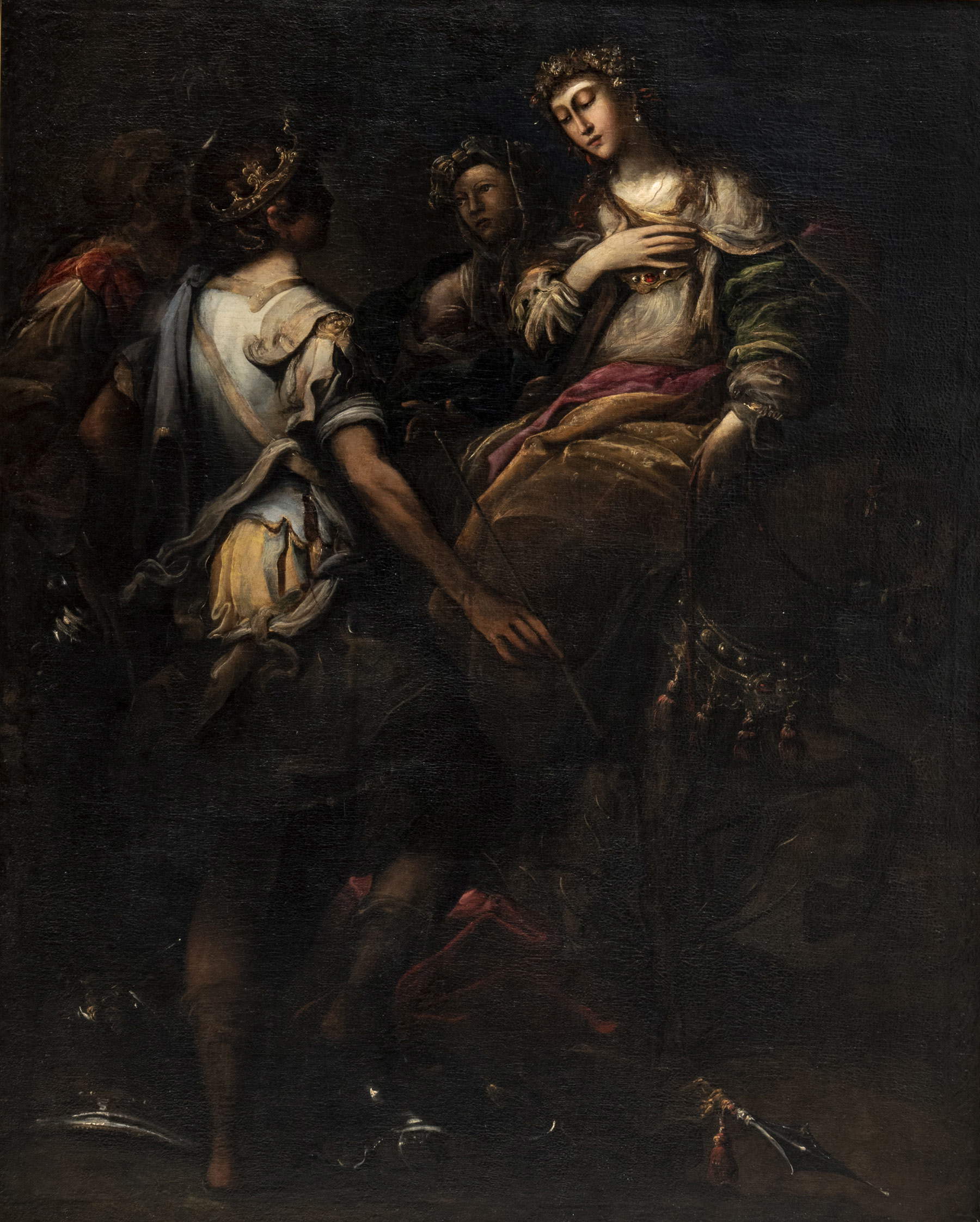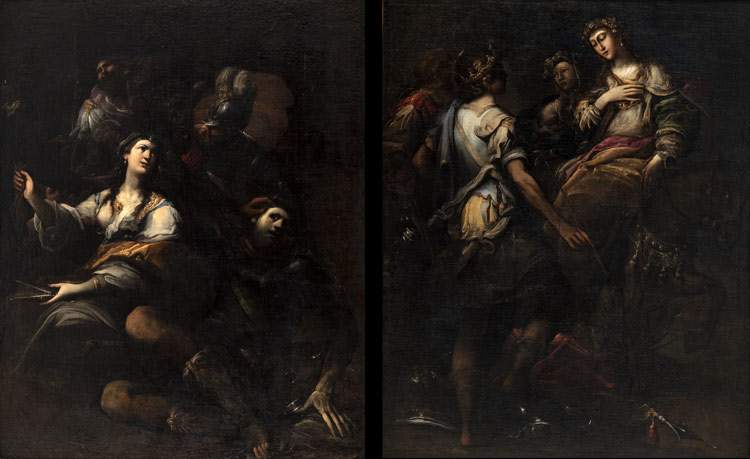The Pinacoteca Nazionale di Bologna has acquired two important works by Giovanni Andrea Donducci known as Il Mastelletta (Bologna, 1575 - 1655): these are two fine works depicting one Samson and Delilah and the other The Offering of Abigail to David. The two works come to the Bologna museum thanks to the generosity of art historian Eugenio Busmanti, a member and board member of the Society of Santa Cecilia, who donated them to the Pinacoteca by bequest in his will.
They are two works of great quality and in excellent state of preservation, and in addition they boast an illustrious origin: in fact, they appear in the inventory (1638) of the Roman collection of the marquis and banker Vincenzo Giustiniani (who, as is known, was among the greatest collectors of Caravaggio: Giustiniani owned nine works by Mastelletta) and they are almost contemporary with the two canvases the painter made for the Chapel of the Ark in the Basilica of San Domenico, just after his return to Bologna. This same important commission was probably brought about by the flattering judgments expressed about him by Cardinal Benedetto Giustiniani, brother of Vincenzo, Papal Legate in Bologna from 1606 to 1611.
The two paintings can be dated between 1612 and 1613, and are among the most important of Giovanni Andrea Donducci’s prpoduction. Art historian Anna Coliva notes that they are to be considered “very challenging for the young painter both dimensionally and narratively; they are ’story’ paintings that have their strongest strongest determinant in the narrative and which are conspicuously detached from the results of heated mysticism that Mastelletta had achieved in the religious works datable to an immediately preceding moment, for example in the Stories of Saints (Bologna, Pinacoteca Nazionale) of violent and mystical visionariness of an almost Counter-Reformation type.” Here, on the other hand, the scene begins to unfold in a narrative rhythm similar to that of the youthful Roman Landscapes, combined with “a chromatic impasto so rich, with such a nervous rippling in the drapery, as to reveal in the painter the achieved mastery of his own means of expression.”
The presentation of the two works will be held on Nov. 20, and along with the paintings will also be presented a publication dedicated to the legacy of Eugenio Busmanti, with texts by Anna Coliva, Maria Pace Marzocchi, Elena Rossoni, a testimony by Vittorio Sgarbi and two writings by Busmanti himself. The presentation is curated by Mario Scalini, director of the Polo Museale dell’Emilia Romagna.
“Along with the satisfaction of seeing here these two works, capitals in Mastelletta’s production,” says Maria Pace Marzocchi, president of the Società di Santa Cecilia - Friends of the Pinacoteca Nazionale di Bologna, “there is an added emotion and at the same time the memory and regret of Eugenio Busmanti, a refined historian of thewide-ranging art, connoisseur of what we used to call the ’major arts’ and at one time and with the same acumen of the ’applied arts,’” who as the final destination for the two canvases chose the Pinacoteca, where they have been placed in the “place, we may think, that he himself would have desired.” “Among my artistic possessions,” the scholar noted in fact, “will be to be hived off the two large paintings by Andrea Donducci known as the Mastelletta that I bequeath to the Pinacoteca Nazionale, with the hope that he will want and be able to exhibit them.”
“Eugenio belonged to that rare species of men who amaze us, who make us believe in the value of diversity,” recalls critic Vittorio Sgarbi. “One meets few of them in life, and they are not always friends. More often they are the restless, critical conscience of the world, extravagant, rebellious even if within a code of recognized rules.”
Giovanni Andrea Donducci, known as “il Mastelletta” because of his father’s trade, who, as historian Carlo Cesare Malvasia wrote, “made mastelli” (Malvasia), was born in Bologna in 1575 and died here in 1655, alternating between his hometown and Rome. Even in the paucity of information on his youthful years, he had to serve his apprenticeship at the Accademia degli Incamminati, continuing to follow the teaching of Ludovico Carracci even after the departure of Annibale and Agostino for Rome in 1595, at least until he became linked to Pietro Faccini and the alternative academy he founded in Bologna, on the thread of a ’bizzarria’ soon shared by Mastelletta. But above all he found his models in the great Mannerism of Emilia, from Parmigianino to Niccolò dell’Abate. He moved to Rome a first time around 1600, and then again from 1608 to 1611. Many Roman commissions are documented in the first decade of the seventeenth century and a little beyond, and many are the presences of his paintings in the collections of the great families, the Spada, the Borghese, the Pamphilij, the Santacroce, the Barberini, and the Giustiniani, Cardinal Benedetto, and the aforementioned Vincenzo.
At the beginning of the second decade, Donducci returned permanently to Bologna, where he continued his production of landscape paintings, enriched by his Roman encounters with landscape painters from northern Europe, primarily Adam Elsheimer. Numerous commissions were received from religious orders: the Franciscans (surviving works include the Twelve Sacred Stories now in the Pinacoteca, circa 1611-12), and of great importance those of the Dominicans, who on the occasion of the celebration of the Chapter of the Dominican Fathers scheduled for 1615, and probably on the instructions of Benedetto Giustiniani, Cardinal Legate in Bologna from 1606 to 1611, entrusted him with much of the decoration of the Chapel of the Ark in the Basilica of San Domenico: the lunettes, the pendentives, the subarches, and the two side canvases (from 1613-15). Dating to the third decade are the decoration of the Carpenters’ Chapel in Santa Maria della Pietà and the two side canvases in the Spada Chapel in San Paolo Maggiore, and the start of work in the Basilica dei Servi in 1630. The last documentary records refer to payments in 1639, while no information has been received on the last period of the artist’s life.
More information about the works or the presentation can be found on the website of the Society of Santa Cecilia.
 |
| Giovanni Andrea Donducci called the Mastelletta, Samson and Delilah |
 |
| Giovanni Andrea Donducci called the Mastelletta, The Offering of Abigail to David |
 |
| The Pinacoteca Nazionale di Bologna acquires two important 17th-century works by Mastelletta |
Warning: the translation into English of the original Italian article was created using automatic tools. We undertake to review all articles, but we do not guarantee the total absence of inaccuracies in the translation due to the program. You can find the original by clicking on the ITA button. If you find any mistake,please contact us.